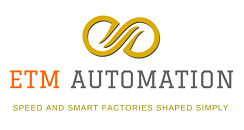Contextualization and Semantic Data
Imagine that you’ve invested $125 million in a project, launched the project, and are about to celebrate an auspicious day as the effort reaches it climax, then everything goes wrong. That’s what happened in 1999 to NASA and the Mars Climate Orbiter failure. A mismatch of units, one subsystem used English units and the other subsystem used the metric system. This resulted in a spacecraft being 100 kilometres off course, likely going straight through the Mars atmosphere and continuing off into space. With a complex system like a space probe, there are multiple teams working in parallel and interoperability becomes a key factor. This was a case where different teams had different standard operations. As NASA found out, this can be very dangerous.

When we look at results from an analysis, we probably all think back to our high school physics teachers or college engineering teachers or other teachers who always reinforced the need to include your units.
Always include your units.
However, many computer programs don’t have that ability. They just provide raw data, raw numbers. There is an assumption, that the people developing the programs have made sure that the output of one program aligns with the expected inputs of the other program.
That’s a pretty big assumption to make.
How can we get around that?
By adding some additional information to the output of programs. This additional information in its simplest form, could be units. If one program outputs in the English system and another program expects input in the metric system, the first thing you could do is to check to see if the input had the right units tagged. And if not, you could send off a request for conversion into the expected units. This would create a much more robust solution.
This describing information can also be labeled as semantic information.
When we think about digital devices, they take inputs, process them, and then provide an output. However, one of the big contrasts between computers and people is that despite advances in processing speed, computers don’t really understand the data and relationships between data.
One such system is MT Connect, an XML format for machine to machine data exchange on the shop floor. MT Connect information can be providedeither from embedded software in hardware into newer generation machines or in retrofit kits that connect to legacy equipment. When considering legacy equipment, there may be instrumentation in the machine that provides some output. For example, position data of a milling head. Often the position data is given in raw output measurements. So it could be a 5 on a scale of 0 to 50. That, however, doesn’t have much of a meaning in the physical sense outside of the machine. MT Connect enables communication amongst multiple machines in a manufacturing environment, and communicates in a semantically tagged format that can provide additional information. Like converting the 5 out 50 into a distance like 2 thousandths of an inch.
Semantic data has a key advantage in that it provides a context to raw data that can allow for checks of assumptions. And alsoprovide context to support automated reasoning and decision-making without human intervention.
Semantic data does require some additional work to ensure that the appropriate metadata, or information about information, is provided in an efficient and accurate manner. However, that upfront investment is well worth the assurance of success.
